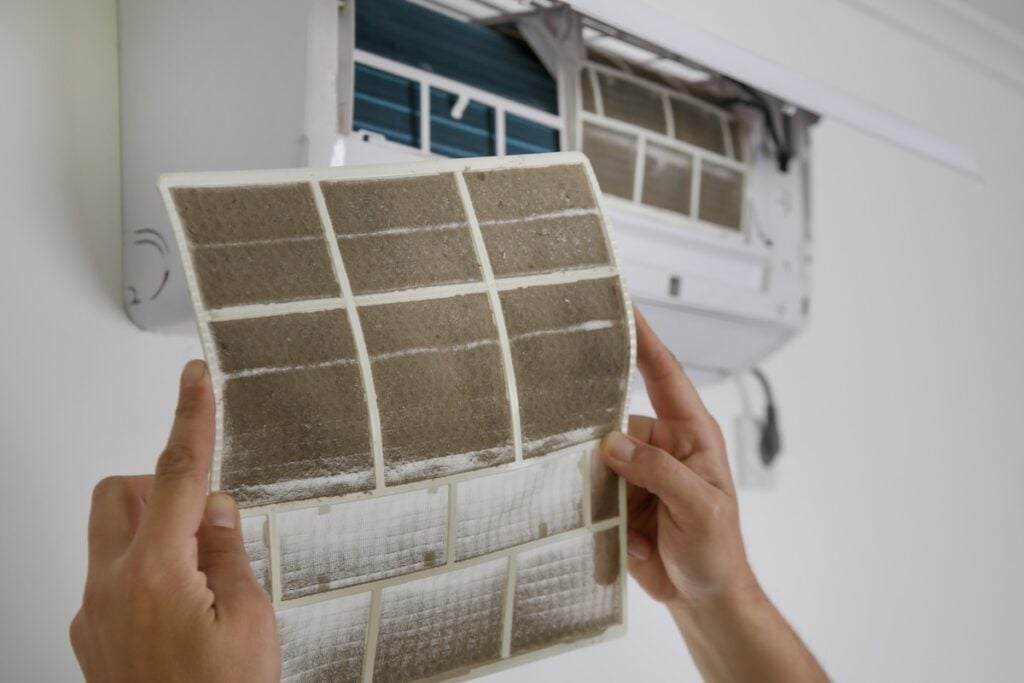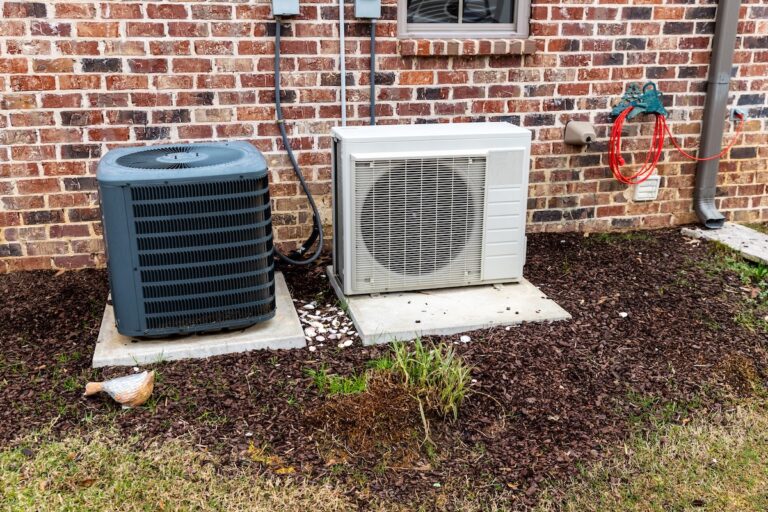
Your air conditioning system works tirelessly to keep your home comfortable, but when was the last time you checked on its most important component? The AC filter plays a crucial role in maintaining indoor air quality and ensuring your system runs efficiently. If you’re wondering how to find AC filter components in your system, you’re not alone—many homeowners struggle with this essential maintenance task.
Regular filter inspection and replacement can extend your system’s lifespan, improve air quality, and reduce energy costs. This guide will walk you through everything you need to know about locating, inspecting, and maintaining your AC filter system.
In this comprehensive guide, we’ll cover:
- Common AC filter locations and how to access them
- Step-by-step inspection techniques for different system types
- Signs that indicate filter replacement is needed
- Proper maintenance schedules to keep your system running smoothly
🏡 Understanding Your AC Filter System

Before diving into inspection methods, it’s important to understand what you’re looking for. Your AC filter serves as the first line of defense against dust, pollen, pet dander, and other airborne particles. Most residential systems use disposable filters that need regular replacement, while some employ washable filters that require cleaning.
The filter’s primary job is protecting your HVAC equipment from debris while improving indoor air quality. A clean filter allows proper airflow, which helps your system maintain consistent temperatures without working overtime. When filters become clogged, your system strains to circulate air, leading to higher energy bills and potential equipment damage.
Different homes have different filter configurations. Single-family homes typically have filters located at the air handler or within return air vents. Apartments and condos might have filters in wall-mounted units or centralized systems. Understanding your specific setup is the first step in effective filter maintenance.
Common AC Filter Locations
- Air Handler Units: AC filters are often found near the air handler unit, which houses the blower fan. Look for a rectangular filter slot along the side of the unit, typically secured with latches, screws, or clips. These units are usually located in basements, attics, closets, or utility rooms.
- Return Air Vents: Some filters are behind return air vents (larger vents pulling air into the system), usually on walls or ceilings in central areas of the home. To access, remove the vent cover secured with screws or clips, or swing open hinged covers in newer homes.
- Furnace Units: For combined heating and cooling systems, filters are often located in a slot between the return air duct and the furnace. Look for an accessible compartment on the lower front, side, or bottom of the furnace.
💡 6 Tips to Inspect Your AC Filter System

Regularly inspecting your AC filter system is essential to maintain clean airflow and improve energy efficiency. A well-maintained filter can extend the life of your system and ensure healthier indoor air quality.
1. Safety First: Turn Off Your System
Before beginning any inspection, turn off your HVAC system at the thermostat and the main electrical panel. This prevents the system from running while you have access panels open and protects you from moving parts. Wait at least 10 minutes after shutdown to allow any residual electrical charge to dissipate.
Check that the system has completely stopped running by listening for the absence of fan noise and feeling for airflow at vents. This step is crucial for your safety and prevents damage to the system if you accidentally disturb components during inspection.
2. Locate All Filter Points
Start by identifying every filter location in your system. Many homes have multiple filters, especially in larger houses or homes with zoned HVAC systems. Check your air handler unit, return air vents, and any additional air processing equipment.
Document each location with photos or notes for future reference. Measure the filter slots to determine the correct filter sizes you’ll need for replacement. Common sizes include 16x20x1, 20x25x1, and 16x25x1 inches, but your system may require different dimensions.
3. Examine Filter Condition
Remove each filter carefully and examine it in good lighting. A clean filter should appear relatively white or light-colored with clearly visible filtering material. Dirty filters will appear gray, brown, or black with accumulated debris.
Hold the filter up to a light source. If you can’t see light passing through easily, the filter needs replacement. Check for tears, bent frames, or gaps that might allow unfiltered air to bypass the filtration system. Damaged filters should be replaced immediately.
4. Check Airflow Direction
Filters are designed to work in one direction only. Look for arrows printed on the filter frame indicating airflow direction. These arrows should point toward the air handler or furnace unit, not toward the return air vent.
Installing a filter backward reduces its effectiveness and can damage your system. If you’re unsure about the correct direction, remember that air flows from the return vents (where air is pulled in) toward the air handler (where air is processed and distributed).
5. Inspect Filter Housing
While you have filters removed, examine the filter housing or tracks for damage, debris, or gaps. Clean any accumulated dust or debris from the housing using a vacuum or damp cloth. Check that the housing firmly secures the filter without gaps that allow air to bypass filtration.
Look for signs of moisture, which might indicate condensation problems or duct leaks. Any water damage or mold growth in filter areas requires immediate professional attention to prevent health hazards and system damage.
6. Test System Operation
After completing your inspection and replacing any necessary filters, restore power to your system and test normal operation. Listen for unusual noises that might indicate installation problems or other issues. Check that air flows normally from supply vents throughout your home.
Monitor your system for the first few hours after filter changes to ensure everything operates correctly. If you notice reduced airflow, strange noises, or other problems, turn off the system and double-check your filter installation.
⚠️ Signs Your Filters Need Immediate Attention
Several warning signs indicate your AC filters require immediate replacement or cleaning. Reduced airflow from vents is often the first noticeable symptom. If rooms aren’t cooling evenly or your system runs constantly without reaching set temperatures, dirty filters might be restricting airflow.
Increased dust accumulation on furniture and surfaces suggests your filters aren’t capturing particles effectively. Family members experiencing more allergies or respiratory issues might also indicate compromised filtration.
Higher than normal energy bills can result from your system working harder to move air through clogged filters. If your monthly costs have increased without changes in usage patterns, check your filters first before assuming equipment problems.
Visible dust or debris around air vents, unusual odors from your HVAC system, or the system short-cycling (turning on and off frequently) all point to filter issues requiring immediate attention.
🛠️ Maintenance Schedule and Best Practices

A maintenance schedule ensures your equipment stays in top condition, reducing downtime and costly repairs. Following best practices extends the lifespan of assets and improves overall efficiency.
Monthly Inspections
Check your filters monthly, even if they don’t need replacement. This regular inspection helps you understand your system’s patterns and catch problems early. Some homes in dusty environments or with pets might need more frequent changes.
Set a monthly reminder on your phone or calendar to inspect filters. Many homeowners find it easiest to check filters when they pay monthly bills or perform other routine household tasks.
Seasonal Replacements
At minimum, replace disposable filters every three months or at the beginning of each season. However, actual replacement frequency depends on several factors including home size, number of occupants, pets, and local air quality.
During peak usage seasons (summer and winter), you might need more frequent replacements. Systems that run constantly put more debris through filters, requiring more frequent attention than systems with moderate usage.
Quality Filter Selection
Choose filters appropriate for your system and needs. Higher MERV (Minimum Efficiency Reporting Value) ratings capture smaller particles but can restrict airflow if your system isn’t designed for them. Most residential systems work well with MERV 8-11 filters.
Avoid cheap fiberglass filters that provide minimal filtration. Pleated filters offer better particle capture and longer service life. For homes with allergy sufferers, consider HEPA filters if your system can handle the increased airflow resistance.
👨🔧 Trust the Experts for Your HVAC Needs
Finding the right AC filter is key to maintaining your system’s efficiency and ensuring clean, healthy air for your home. At Thelen Plumbing, Heating, and Air, we pride ourselves on being the team you can trust for all your HVAC needs. With years of experience, personalized solutions, and a commitment to excellence, our skilled technicians are here to make your home as comfortable and efficient as possible.
Whether you need help choosing the right filter, scheduling routine maintenance, or tackling a larger HVAC issue, we’ve got you covered. Contact Thelen Plumbing, Heating, and Air today to schedule your appointment and experience the difference of working with a team that puts your comfort first.
Unlock Our Limited-Time Deals!
Take advantage of our offers on AC tune-ups, new installs, repairs, and more.
We Can’t Wait to Help Your Home!
"*" indicates required fields





